Valle Sagrado de Los Incas
English text below
Dada a dimensão do vale sagrado e o fato de estarmos com as crianças, optamos por fazer visitas com um guia particular, que nos levou aos principais pontos do Valle Sagrado. O objetivo foi poder fazer as visitas no nosso ritmo e no nosso tempo, e ainda teríamos a oportunidade de fazer diversas perguntas.
Começamos a visita ao Valle Sagrado por Tipón, e foi um excelente começo. Chegamos com o sítio arqueológico praticamente vazio, e isso nos deu a oportunidade e explorá-lo com calma.
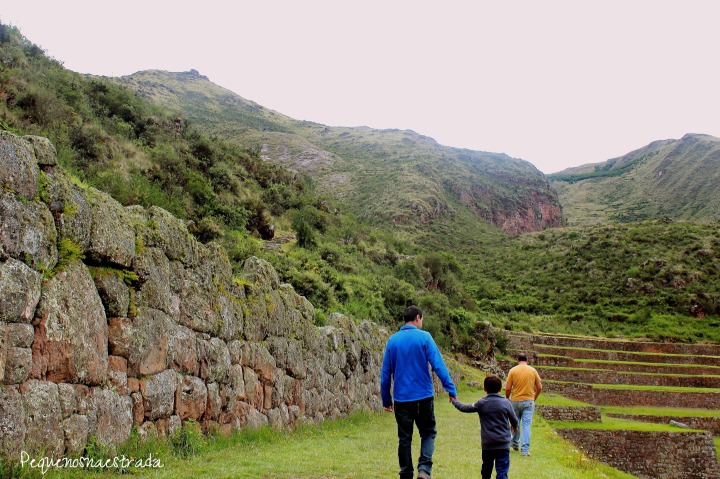
O lugar é belíssimo. É composto de diversas terraças (eles chamam de “andenes”) na parte inferior, que eram utilizadas para fins agrícolas. Esses andenes são irrigados por canais, que se distribuem e por meio de gravidade levam a água a toda parte.
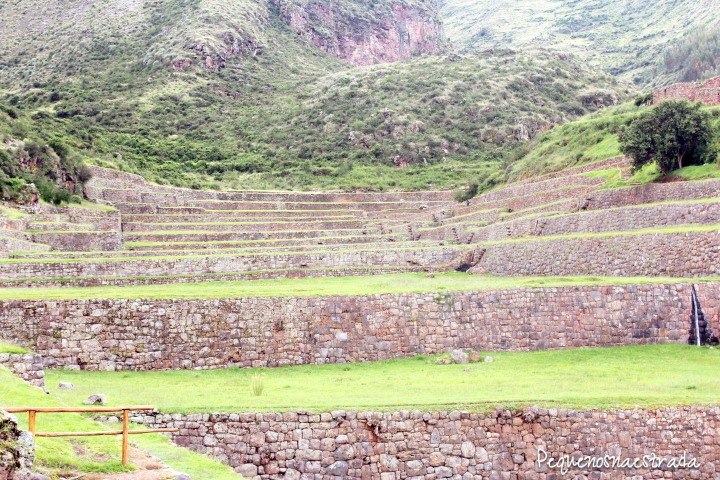
O mais fascinante é a parte superior do sítio, onde há um local no qual parece ter sido um templo para adoração e homenagem à água. Ali, em meio às conservadas fontes que trazem água da montanha, aprendemos um pouco mais sobre a mitologia deste povo, principalmente a forma na qual os Incas enxergavam a origem da vida e das coisas, e como a água faz parte dessa origem.
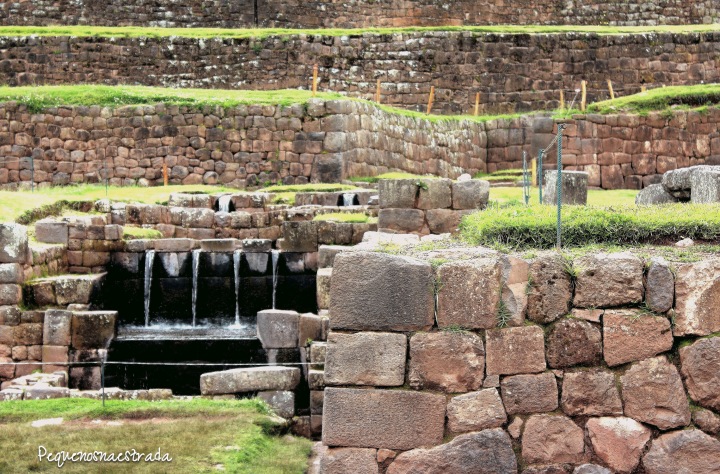
Saindo de Tipón, seguimos para visitar o sítio arqueológico de Pisaq. Este sítio é imenso, e por conta disso, e da dificuldade em percorrê-lo em sua totalidade levando as crianças, optamos por conhecer apenas uma parte dele. Mas ficou aquele gostinho de quero mais, e certamente caso haja uma outra oportunidade, vamos reservar um dia todo somente para este lugar.
As partes de Pisaq que visitamos foram as terraças de agricultura, ou fazendinhas como o Mateus costuma chamar, e também o Palácio Imperial.
As terraças são grandes e largas, e além de terem sido utilizadas para produção e experimentos com alimentos, também servem de suporte e apoio para reter toda a terra daquela parte da montanha, e assim possibilitar que outras construções fossem erguidas nas partes mais altas. A engenharia por trás dessas construções é antissísmica, e elas resistem e suportam grandes quantidades de terra até os dias atuais.
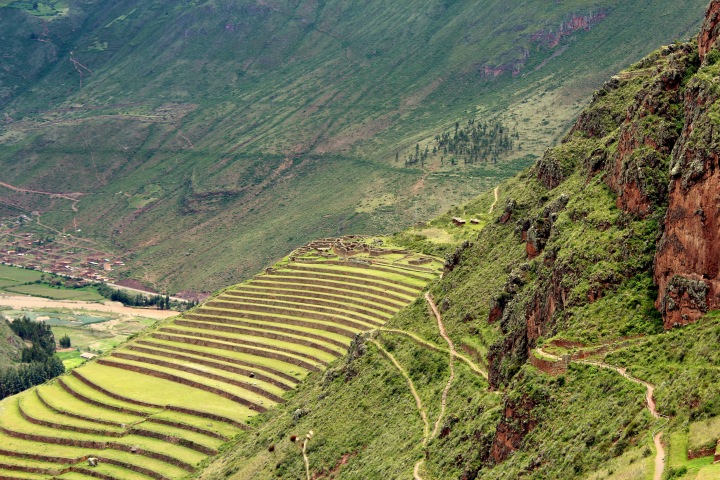
Mais para o alto, visitamos o Palácio Imperial ou Citadela, que é uma estrutura erguida com propósito principalmente religioso. Há diversas salas e pátios, nos quais incluem uma sala onde possivelmente situava-se o trono para os Incas, e também outros setores que tinham fins religiosos e cerimoniais. À medida que subíamos pela estrutura, mais legal ficava contar para as crianças, de forma lúdica, como aquele povo gostava do Sol, da natureza e da água.
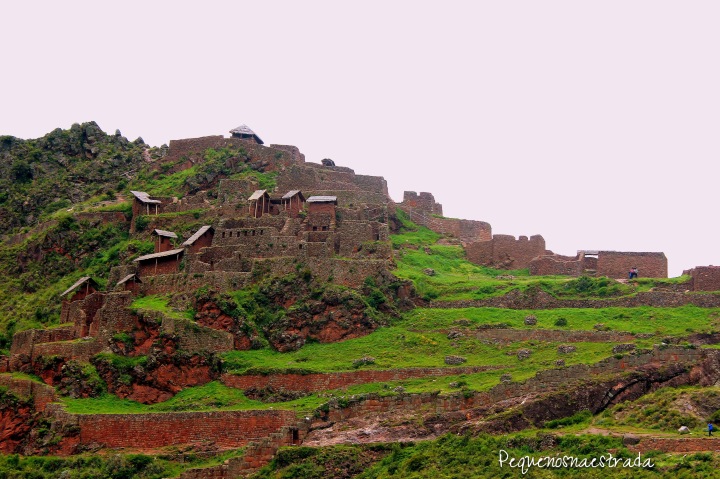
O lugar é belíssimo. É composto de diversas terraças (eles chamam de “andenes”) na parte inferior, que eram utilizadas para fins agrícolas. Esses andenes são irrigados por canais, que se distribuem e por meio de gravidade levam a água a toda parte.
O mais fascinante é a parte superior do sítio, onde há um local no qual parece ter sido um templo para adoração e homenagem à água. Ali, em meio às conservadas fontes que trazem água da montanha, aprendemos um pouco mais sobre a mitologia deste povo, principalmente a forma na qual os Incas enxergavam a origem da vida e das coisas, e como a água faz parte dessa origem.
Do alto do Palácio Imperial se tem uma bela vista de todo o entorno, incluindo o vale do rio Urubamba, as terraças abaixo, alguns aquedutos feitos pelos Incas e também o cemitério que fica na parede da montanha em frente.
Depois de tanto andar, saímos com muita fome das ruínas de Pisaq, e fomos comer no povo que leva o mesmo nome. Nada como um delicioso menu do dia, com uma sopinha, prato feito com raízes da região, feijão, suco, e por apenas US$ 1,5!
Saciada nossa fome por alimentos, continuamos então a saciar nossa fome por conhecer os lugares, e seguimos para visitar o sítio de Pikillaqta.
Muito embora não faça parte diretamente das contruções Incas, um dos sítios arqueológicos que mais gostramos foi o sítio de Pikillaqta. Esse povo começou a habitar o Vale do Rio Urubamba antes da chegada dos Incas, e mesmo após esse evento eles foram capazes de manter certa autonomia, além de cultura e idioma próprios.
A cidade de Pikillaqta nos impressionou pelo tamanho e também pela capacidade daquelas construções de resistirem em pé por tanto tempo.
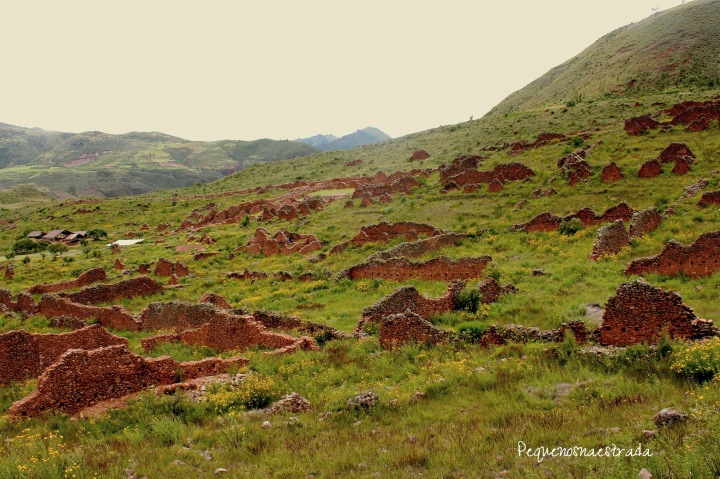
As grandes muralhas que cercam a cidade ainda são imponentes, bem como seus corredores e casas. As crianças adoraram visitar o lugar, e correram bastante por entre as ruínas, subindo e descendo nos muros, e brincando de serem eles as pessoas que moravam por ali e passeavam de um lugar a outro na cidade.
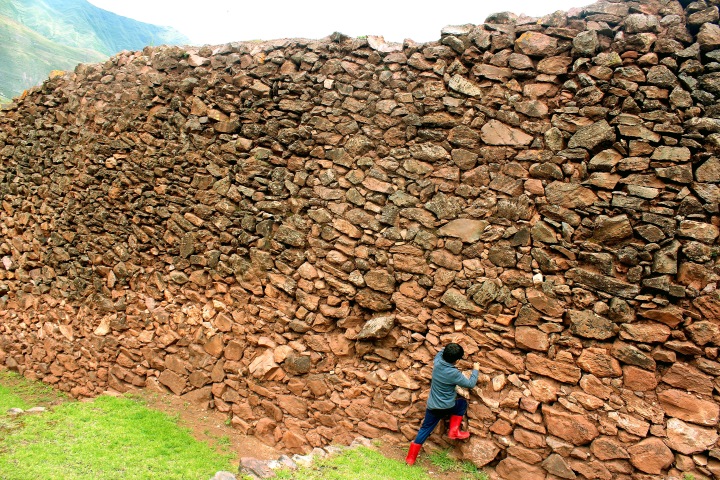
Dali seguimos para as Salinas de Mara. Aqui vamos dar uma opinião muito pessoal, e que não necessariamente irá refletir o que outros visitantes pensam.
Não gostamos nem um pouco do lugar, e achamos uma perda de tempo e dinheiro. As Salinas de Mara fazem parte de um local onde se extrai sal há séculos, e ainda hoje essa prática continua. São diversas poças de lama, algumas poucas brancas com sal, que estão escavadas em um bonito vale, e daí se extrai o sal. Na nossa visão, não achamos nada interessante, e vimos apenas várias poças de lama em sequencia. Mas claro, isso é uma visão pessoal e não necessariamente será compartilhada por todos.
Daí seguimos para o sítio arqueológico do de Moray. Um lugar bem bonito e intrigante, pois não se sabe com exatidão para qual fim se destinava. Do algo, vemos uma série de terraças que formam círculos perfeitos e outros imperfeitos, tal como um anfiteatro.
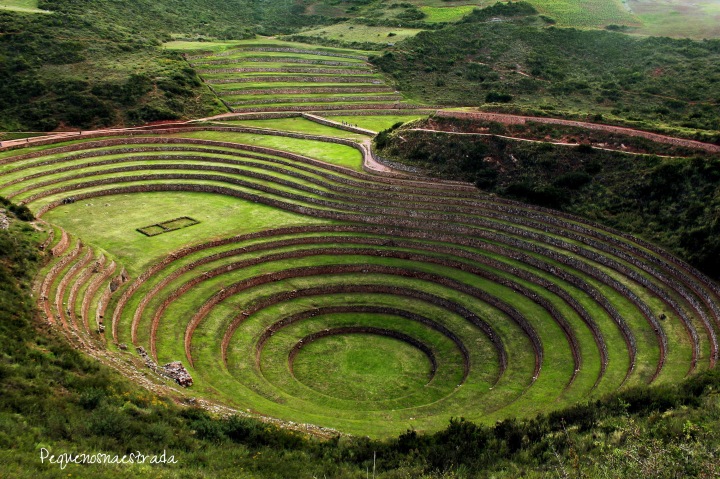
Diz-se que provavelmente era um local cujo objetivo era promover experimentos agrícolas, e possivelmente também algumas cerimônias. Sofia já estava cansada a essa hora, e a levamos no kanguroo. O Mateus gostou do lugar, e aproveitou para correr um pouco pelas terraças. Nós achamos o sitio bem calmo e tranquilo, e ele nos passou paz e tranquilidade.
Partimos então já no final do dia para nossa última visita, o sítio arqueológico de Chinchero. Quando chegamos e entramos nas ruínas, o sol já estava se pondo, e não pudemos aproveitar o lugar da forma que gostaríamos.
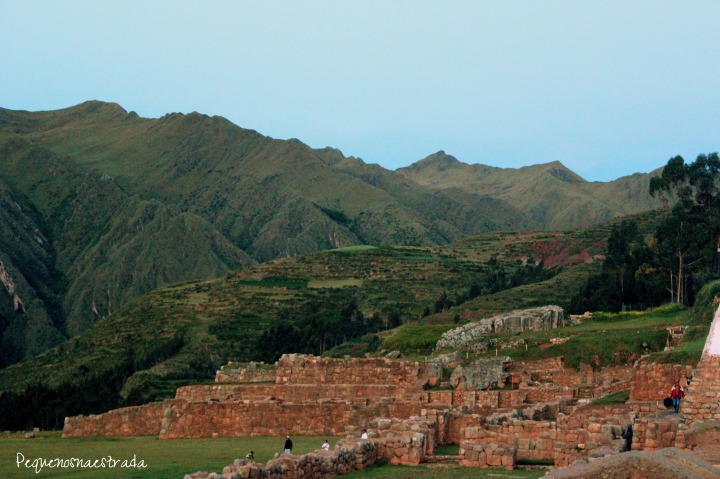
Sofia já estava cansada e com frio, e queria ir embora logo. Já Mateus, encontrou algumas crianças peruanas jogando futebol em meio às ruínas, e claro que aquilo era o programa mais interessante que havia ali. Logo tinha feito novos amigos e estava jogando também.
Ainda com um pouco de luz, recorremos rapidamente o sítio e vimos o quão impressionante ele é. Vimos as pedras do sol e da lua, e como estavam alinhadas. Passeamos também pelos antigos muros, e visitamos a Igreja que foi erguida por cima do templo Inca, como era de costume na época da colonização.
Hora de voltar para Cusco, felizes e satisfeitos com esse belo passeio. Faltava apenas a parte mais difícil: tirar Mateus do jogo de futebol para leva-lo de volta!
Ollataytambo
Ollataytambo situa-se no Vale Sagrado dos Incas, e deixamos para conhecer esse sitio no dia anterior à nossa ida à Machu Picchu, uma vez que o trem para lá parte de Ollataytambo.
Assim, ainda em Cusco, acordamos cedo e pegamos uma van que nós deixou no meio do povoado e de lá caminhamos até o sítio.
Ficamos impressionados! O dia estava lindo, o que deixou a vista das ruínas ainda mais bela. A parte não tão charmosa do sol é o calor, que dificulta o passeio. As ruínas, como muitos outros sítios Incas, situa-se em uma montanha, e para conhecê-lo há de se subir pelas terraças. O calor então dificulta o passeio. Levamos duas horas para visitar o local, mas pode-se levar mais tempo para percorrer os locais mais distantes do sítio. Programar bem o passeio é essencial.
A area cerimonial do sítio é belíssima, com as suas construções e o templo do Sol. Durante o percurso víamos nas montanhas ao lado outras construções Incas, que eram utilizadas como silos para estocagem de alimentos. Estes silos ficam encrustrados nas paredes das montanhas. Ao lado deles, com um pouco de imaginação, dá para ver uma forma nas pedras que segundo o povo representa o rosto da divindade criadora, Viracocha. Parece um ancião com barba e uma coroa. Bem legal!
Exatamente ali foi travada uma das últimas batalhas entre espanhóis e Incas, e mesmo em desvantagem numérica, os Incas derrotaram os espanhóis, que nesse momento não entraram na cidade. Após essa vitória, os guerreiros Incas deixaram essa cidade para levar a luta de resistência contra os invasores para a selva, no entanto a cidade continuou sendo habitada e ficou relativamente bem preservada até os dias de hoje.
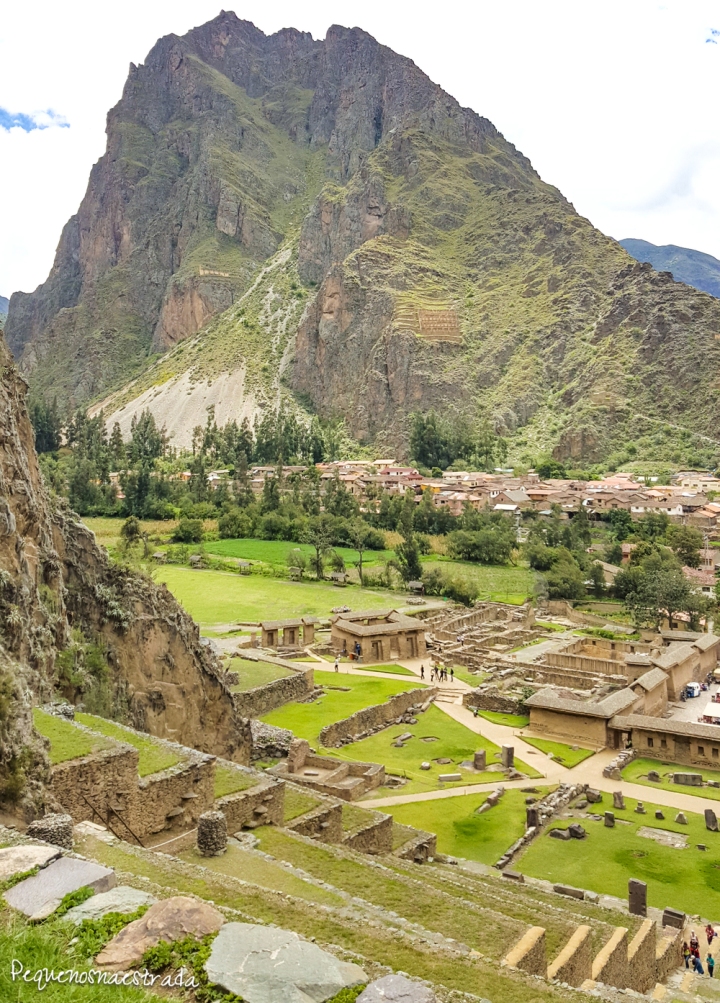
[EN] Cusco and Sacred Valley of the Incas
We were very curious to know more about the Inca culture in the Cusco region, so we started to plan how our visit would be like.
Once again we would have to meet our expectations about the places we wanted to see with the expectations of the children, so they would be able to enjoy the trip as much as we would.
For that, we used a lot of Inca mythology. Besides interesting, it served as a base to share with the children everything we learned on the tours, showing them how the Incas liked the Sun (Inti – Sun God), earth and nature (Pacha Mama), Moon (Mama Quilla or Quilla) or the water.
Thus, the whole tour was more playful and fun for the children, and it was easy to show them the temples, buildings and terraces, which by the way was nicknamed as Inca farms.
Cusco
We began our visit to Cusco, and our passage there was intense.
Cusco is usually remembered as the base city to visit Macchu Picchu, though such remembrance alone is not fair.
The cultural syncretism we found there was a welcome surprise. The ancient Inca capital impresses with its resilient and beautiful ruins, that of so stubborn in resisting to all type of mistreatment and violations, today they are immortalized and awarded as world’s cultural heritage.
Under its foundations, imposing temples and colonial buildings were constructed – which brings not only the Spanish colonial architecture but also traces of Moorish influence – that integrate a diverse and rich architectural and cultural complex. All that combination makes Cusco an important piece in the understanding of the cultural cauldron that is Peru.
There is much to do there, both in the city and in the surroundings. And because we are curious about cultural, historical, and spiritual issues, we had a lot of fun with this visit, and we could barely absorb the vast amount of information we found.
And Cusco worth a visit not only for the historical aspects. Talking with the friendly local people and risking learning a few words in Quechua (a language spoken in the Inca times and still used today) is quite amusing.
Or to sample the wonderful Peruvian cuisine with its sophisticated dishes. Or even traditional dishes such as Cuy al horno (a kind of guinea pig that is served whole). For the curious and brave, it is worth visiting the San Pedro market and lunch a well-served menu of the day, for BRL 5.00 (USD 1,45). Delicious, by the way.
As a tip, we found it essential to make the guided tours through the historic city center, as well as through the ruins in the surroundings – whether private or group tours. They help us delve into the history of the place with details that alone we would have difficulty in capturing.
Sacsayhuaman
It is very difficult to depict the archaeological sites in Cusco and its surroundings, because each one has its specificity and beauty. Of course, each visitor has a preference for each one of them. We really liked Sacsayhuaman.
And what we liked most about this place was not only its huge stones worked and perfectly embedded in each other, but rather to imagine that place as it should be before it was destroyed.
Sacsayhuamán is about 2 km from Cusco, and it is purpose is not yet fully known. Today it is said that it was an Inca fortress, and this idea resides in reports that exist from the time of the Spanish conquest, in which there were diverse military artifacts stocked there; and especially in the fact that it was there that Manco Inca, one of the last Inca rulers, decided to cease negotiations with the Spaniards, and from there he tried to resist and expel the invaders. However, there are important places in Sacsayhuamán that apparently had a ceremonial purpose instead.
The war of resistance lasted a few months before the Incas were finally defeated in Cusco and surrounding areas and they took the fight to the Peruvian jungle.
Nowadays the place is very big, but they tell stories that it was much bigger. In former times the site had walls several meters high, and observation towers from which one could see the whole valley where Cusco is. Today there are only the impressive foundations of what was once the old fortress.
Sacsayhuaman was destroyed by the Spaniards during the conquest period, and later its remains were used by the residents to build houses and other works, before this exploration was definitively ceased in the 1930s. Virtually every stone that was not difficult enough to be transported from there was taken.
It is a very easy walk even for children, who had a lot of fun running through the lawns and climbing the ruins. It is also worth visiting the viewpoint and Cristo Blanco, for a panoramic view of the city of Cusco just below.
Sacred Valley of the Incas
Given the size of the sacred valley and the fact that we were with the children, we chose to make visits with a private guide, who took us to the main points of the Sacred Valley. The purpose was to be able to make the visits in our pace and in our time, and still we would have the opportunity to ask several questions.
We started the visit to the Sacred Valley by Tipón, and it was an excellent beginning. We arrived to find the archaeological site practically empty, and this gave us the opportunity to explore it calmly.
The place is beautiful. It is composed of several terraces (they call “platforms”) in the lower part, which were used for agricultural purposes. These platforms are irrigated by channels, which distribute themselves and by gravity and lead water everywhere.
The most fascinating is the upper part of the site, where there is a place in which there seems to have been a temple for worship and honoring the water. There, among the preserved fountains that bring water from the mountain, we learned a little more about the mythology of this people, especially the way in which the Incas saw the origin of life and things, and how water is part of that origin.
Leaving Tipón, we continue to visit the archaeological site of Pisaq. This site is immense, and because of this, and also because of the difficulty of seeing it all with children, we chose to visit only a part of it. But it worth to leave a whole day to explore all the site.
The parts of Pisaq that we visited were the terraces of agriculture, or small Inca farms as Mateus would call theml, and also we visited the Palace Imperial.
The terraces are large and wide, and besides being used for production and experiments with food, they also served as support to retain all the earth on that part of the mountain, and thus enable other buildings to be erected in the highest parts. The engineering behind these constructions is anti-seismic, and they withstand and sustain large amounts of earth to this day.
Further up, we visit the Imperial Palace or Citadel, which is an erected structure with primarily religious purpose. There are several rooms and courtyards, which include a room where possibly the throne for the Incas was located, as well as other sectors that had religious and ceremonial purposes. As we climbed the structure, it was fun to tell the children, in a playful way, how those people liked the sun, nature and water.
From the top of the Imperial Palace you have a beautiful view of the surroundings, including the Urubamba river valley, the terraces below, some aqueducts made by the Incas and also the graveyard that is on the mountain wall opposite.
After so much walking, we left to have lunch at the town that bears the same name. Great to have a delicious menu of the day, with a soup, dish made with local roots, beans, juice, and for only $ 1.5!
Satisfied our hunger for food, we then continued to satiate our hunger for knowing the places, and we moved on to visit the site of Pikillaqta.
Although not part of the Inca site, one of the archaeological sites that we most liked was the site of Pikillaqta. These people began to inhabit the Valley of the Urubamba River before the arrival of the Incas, and even after this event they were able to maintain a certain autonomy, in addition to their own culture and language.
The city of Pikillaqta impressed us by its size and also by the capacity of those constructions to stand for so long.
The great walls surrounding the city are still imposing, as well as its corridors and houses. The children loved to visit the place, and they ran through the ruins, up and down the walls, and played about being the people who lived there and wandered from place to place in the city.
From there we continue to the Salinas de Mara. Here we will give a very personal opinion, and that will not necessarily reflect what other visitors think.
We do not like the place at all, and we find it a waste of time and money. The Salinas de Mara are part of a place where salt has been extracted for centuries, and still today this practice continues. They are several puddles of mud, a few white ones with salt, that are excavated in a beautiful valley, and from there the salt is extracted. In our view, we did not find anything interesting, and we saw only several puddles of mud in sequence. But of course, this is a personal vision and will not necessarily be shared by all.
From there we continue to the archaeological site of Moray. A very beautiful and intriguing place, for its purpose is not yet fully discovered. From above, we see a series of terraces that form perfect circles and imperfect ones, such as an amphitheater.
It is said that it was probably a place which purpose was to promote agricultural experiments, and possibly also some ceremonies. Sofia was already tired by now, and we carried her into the Kanguroo. Mateus liked the place, and took the opportunity to run around the terraces for a bit. We found the place to be very calm, and it gave us peace and tranquility.
We were then at the end of the day for our last visit, the archaeological site of Chinchero. When we arrived and we entered the ruins, the sun was already setting, and we could not enjoy the place the way we would like.
Sofia was already tired and cold, and wanted to leave soon. As for Mateus, he found some Peruvian children playing soccer among the ruins, and of course this was the most interesting activity for him. Soon he had made new friends and was playing too.
Still with the last sun light, we quickly walked through the site and saw how impressive it is. We saw the stones of the sun and the moon, and how they were aligned. We also visited the old walls, and visited the church that was built above the Inca temple, as was usual at the time of colonization.
Then we returned to Cusco, happy and satisfied with this beautiful tour. The most difficult part on returning was to take Mateus off the soccer game and bring him along!
Ollataytambo
Ollataytambo is located in the Sacred Valley of the Incas, and we visited this place the day before we went to Machu Picchu, as the train to that site departs from Ollataytambo.
Thus, still in Cusco, we woke up early and took a van that we left in the middle of the village of Ollantaytambo and from there we walked to the site.
We were impressed! The day was sunny, which made the view of the ruins even more beautiful. The not so charming part of the sun is the heat, which makes walking difficult. The ruins, like many other Inca sites, are situated on a mountain, and to get to know them one has to climb the terraces. The heat then makes walking difficult. It took us two hours to visit the place, but it may take longer to explore farther away.
The ceremonial area of the site is beautiful, with its buildings and the Temple of the Sun. During the journey we saw in the mountains beside other Inca constructions, which were used as silos for food storage. These silos are encased in the walls of the mountains. Beside them, with a little imagination, you can see a shape in the stones that according to the people it represents the face of the creative deity, Viracocha. He looks like an old man with a beard and a crown. Cool!
Exactly there in Ollantaytambo was fought one of the last battles between Spaniards and Incas, and even in numerical disadvantage, the Incas defeated the Spaniards, who at that moment did not enter the city. After this victory, the Inca warriors left that city to take the resistance fight against the invaders to the jungle, nevertheless the city continued being inhabited and was relatively well preserved until the present day.
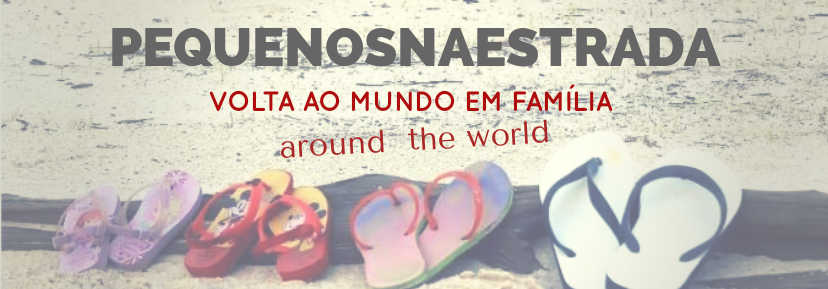

Texto maravilhoso e lindas fotos!
CurtirCurtir